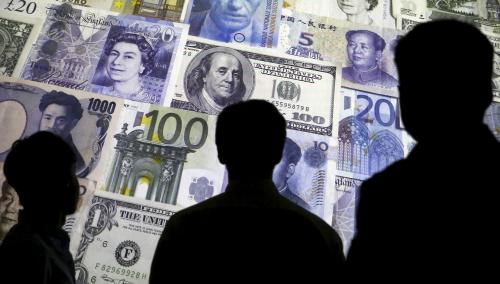This paper is published as part of the Hutchins Center on Fiscal and Monetary Policy’s Productivity Measurement Initiative.
Measured growth in productivity and output has been disappointingly slow, even while technological advances appear to be yielding considerable benefits for everyday life. This dissonance has spurred complaints that government economic statistics aren’t capturing reality.
While this new attention is welcome, economists and others who engage in this conversation do not always start on the same page. Conversations are impeded by a lack of understanding of how the statistics are defined and how they are limited, both in terms of the underlying concept and in terms of how they are calculated given the concept.
In a new working paper, Karen Dynan of Harvard University and the Peterson Institute for International Economics and the Hutchins Center’s Louise Sheiner conclude that changes in real Gross Domestic Product (GDP) do a reasonable job in capturing changes in a nation’s economic well-being with one important exception. They argue that the exclusion of non-market activities that increase economic well-being merits more attention, particularly given the growing importance of such activities.
They cite several areas where measurement falls short of the conceptual ideal. First, the national accounts may mismeasure nominal GDP arising from the digital economy and the operation of multinational corporations. Second, deflators used to separate GDP into nominal GDP and real GDP may produce a biased measure of inflation. For goods and services that do not change in quality over time, current deflator methods work reasonably well. For new goods and services, or goods and services that are changing in quality, current methods may not capture consumer surplus well.
Dynan and Sheiner draw several broad conclusions.
GDP, as currently defined, should retain its stature as a major economic statistic. While it is not a comprehensive measure of welfare or even economic well-being, the GDP concept—along with the pieces of GDP available through the national accounts—is useful and provides a great deal of information about economic welfare.
There is scope for materially improving parts of the GDP calculation to be more closely aligned with the conceptual ideal. Doing so should be a goal for the statistical community and the broader community of economists. Such efforts may require the use of alternative data sources and methodologies, particularly in areas such as health care, new technologies, and new methods of payment.
Given the limitations of GDP as a measure of welfare, statistical agencies and other economies should continue to develop complementary measures that more completely capture well-being.
Read the full paper here.
The authors did not receive financial support from any firm or person for this article or from any firm or person with a financial or political interest in this article. Neither is currently an officer, director, or board member of any organization with an interest in this article.
The Brookings Institution is committed to quality, independence, and impact.
We are supported by a diverse array of funders. In line with our values and policies, each Brookings publication represents the sole views of its author(s).








